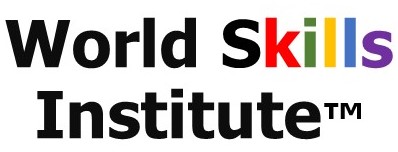
Course Curriculum:
Module 01 – Six Sigma and Organizational Goals
Lesson 1.0 – Introduction to Six Sigma and Organizational Goals
Lesson 1.1 – Six Sigma and Organizational Goals
Lesson 1.2 – Lean Principles in the Organization
Lesson 1.3 – Design for Six Sigma (DFSS) Methodologies
Lesson 1.4 – Summary to Six Sigma and the Organization
Module 02 – Define Phase
Lesson 2.0 – Introduction to Define Phase
Lesson 2.1 – Project Identification
Lesson 2.2 – Voice of the Customer (VOC)
Lesson 2.3 – Project Management Basics
Lesson 2.4 – Management and Planning Tools (Apply)
Lesson 2.5 – Business Results for Projects
Lesson 2.6 – Team Dynamics and Performance
Lesson 2.7 – Summary of Define Phase
Lesson 2.8 – Project 1
Module 03 – Measure Phase
Lesson 3.0 – Introduction to Measure Phase
Lesson 3.1 – Process Analysis and Documentation (Create)
Lesson 3.2 – Probability and Statistics
Lesson 3.3 – Collecting and Summarizing Data
Lesson 3.4 – Statistical Distributions (Understand)
Lesson 3.5 – Measurement System Analysis (MSA)(Evaluate)
Lesson 3.6 – Process and Performance Capability
Lesson 3.7 – Summary of Measure Phase
Lesson 3.8 – Project
Module 04 – Analyze Phase
Lesson 4.0 – Introduction to Analyze Phase
Lesson 4.1 – Hypothesis Testing
Lesson 4.2 – Exploratory Data Analysis
Lesson 4.3 – Summary of Analyze Phase
Lesson 4.4 – Project
Module 05 – Improve Phase
Lesson 5.0 – Introduction to Improve Phase
Lesson 5.1 – Design of Experiments (DOE)
Lesson 5.2 – Root Cause Analysis (Analyze)
Lesson 5.3 – Lean Tools08:49Preview
Lesson 5.4 – Selecting a Solution
Lesson 5.5 – Summary Improve Phase
Lesson 5.6 – Project
Module 06 – Control Phase
Lesson 6.0 – Introduction to Control Phase
Lesson 6.1 – Statistical Process Control (SPC)
Lesson 6.2 – Control Plan (Apply)
Lesson 6.3 – Lean Tools for Process Control
Lesson 6.4 – Summary of Control Phase
Lesson 6.5 – Project
Course Curriculum:
Session 00 – Course Introduction
Session 01 – Define Phase
Lesson 01 – The Basics of Six Sigma
Introduction to define phase
Learning objectives
Six Sigma
Lean
Sigma shift
Yield
Continuous Improvement Process Evolution
Six Sigma Deliverables
Problem Solving Strategy
VOC Campaign
VOC Tools
KANO Analysis
Six Sigma Roles and Responsibilities
Project Champion and Master Black Belt
Black Belt and Yellow Belt
Drivers of Six Sigma
IASSC CertificationThe exam fee is included for all regions except the Indian subcontinent and Africa.
The candidate can earn IASSC certification in Lean Six Sigma Black Belt by appearing for the
IASSC Certified Lean Six Sigma Black Belt exam and scoring a minimum of 70%. Upon
succeeding, the candidate will receive a certificate, suitable for framing,
issued by the IASSC.
Lesson 02 – The Fundamentals of Six Sigma
Process
Project charter
Critical to quality
Cost of poor quality
Calculating CoPQ
Pareto Analysis
Basic six sigma metrics
Lesson 03 – Selecting Lean Six Sigma Projects
Selecting Lean Six Sigma Projects
Project Selection Roadmap
Project Charter Elements
Project Charter Business Case
Project Charter Problem Statement
Project Charter Goal Statement
Project Charter Scope
Project Charter Key Milestones
Project Charter Team Selection
Tuckman’s Stages of Team Formation
The RACI Matrix
Expected Financial Benefits
Developing Project Metrics
key performance indcator
Financial Evaluation and Benefits Capture
Net present value
Lesson 04 – The Lean Enterprise
Selecting lean six sigma projects
Principles of Lean
Lean Methodology
Lean and Six Sigma
3M’s of Lean
Categories of Waste: TIMWOOD
Category of Waste: DOWNTIME
5S
Steps in 5S
Lesson 01 – Process Definition
Introduction to measure phase
Learning Objectives
Tools to Define a Process
Cause and Effect Diagram
Drawing a Fishbone diagram
Root Cause
Process Mapping
Creating a Process Map
Process Mapping Levels
Four Types of Process Maps
SIPOC Process Map
Value Stream Maps
Value Stream Maps: Key Metrices
X-Y Diagram or Scatter Plots
Failure Mode and Effects Analysis (FMEA)
FMEA Process
FMEA Template
Severity, Occurrence, and Detection Table
Risk Priority Number (RPN)
Session 02 – Measure Phase
Lesson 02 – Six Sigma Statistics
Data
Measuring data
Basic Statistics
Measures of Central Tendency
Measures of Dispersion
Data Collection Plan
Data Collection Methodology
Develop a Measurement Plan
Collect Data
Sampling
Sampling methods
Graphical Analysis
Graphical Analysis Tool
Introduction to Minitab
Demo: Box Plot One Variable
Demo: Box Plot with Three Variables
Demo: Time series plot
Normal Distribution
Standard Normal Distribution
Demo: Normality
Lesson 03 – Measurement System Analysis
Introduction
Measurement System Analysis: Overview
Good and Poor Measurement System Analysis
Measurement Error: Categories
MSA: Sources of Variation
Repeatability
Reproducibility
Accuracy and Precision
Bias
Stability
Linearity
MSA: Types
Gage R&R Guidance in MINITAB
Gage R&R Ground Rules
Demo: Gage R_R Continuous Data
Attribute Gage Study
Demo: Gage R_R Attribute Data
Lesson 04- Process Capability
Introduction
Process Capability
RUMBA Analysis
Process Capabilities
Data Types
Baseline Performance
Components of Variation
Process Stability
Process Capability: Indices
Demo: Capability Analysis Continuous Data
Process Capability Indices: Example
Demo: Capability Analysis Continuous Data Sigma Level
Z Score
Process Baseline
Defects Per Unit
Defects Per Million Opportunities
Attribute Data: Example
Short-term and long-term Process Capability
Lesson 01 – Classes of Distribution
Introduction to Analyze phase
Learning Objectives
Frequency Distribution
Demo: Frequency Distribution
Probability Distribution
Types of Probability Distribution
Types of Discrete Probability Distribution
Types of Continuous Probability Distribution
Session 03 – Analyze Phase
Lesson 02 – Inferential Statistics
Introduction
Inferential Statistics
Branches of Inferential Statistics
Central Limit Theorem
Lesson 03 – Hypothesis Testing
Introduction
Basics of Hypothesis Testing
Confidence Interval
Significant difference
Detecting Significance
Statistical Hypothesis Test
Hypothesis Testing: Risks
Beta Risk
Power of a Hypothesis Test
Sample Size
Hypothesis Testing Roadmap
Lesson 04 – Hypothesis Testing with Normal Data
Introduction
Normal Data
One Sample t-test
One Sample t-test Sample Size
Demo:1 sample t test
Two-Sample t-test
Two-Sample t-test Example
Demo: 2 sample t test
Demo: Bartlett’s Test
Paired t-test
Demo: Paired test
ANOVA
Demo: Anova
Residual Plot
Lesson 05 – Hypothesis Testing with Non-Normal Data
Introduction
Non Parametric tests
Mann-Whitney Tests
Demo: Mann_Whitney_Test
Kruskal-Wallis Test
Demo: Kruskal_Wallis_Test
Mood’s Median Test
Demo: Mood’s Median Test
Friedman Test
Demo: Friedman_Test
1 Sample Sign Test
Demo: 1_Sample_Sign_Test
1 Sample Wilcoxon Test
Demo: 1 Sample Wilcoxon Test
One-Sample Proportion Test
Demo: One-Sample Proportion Test
Two-Sample Proportion Test
Demo:Two-Sample Proportion Test
Chi-Square Tests
Demo: Chi-Square_Test_of_Independence
Chi-Square Goodness-of-Fit Test
Demo: Chi-Square Goodness-of-Fit Test
Chi-Square Cross Tabulation
Demo: Chi-Square Cross Tabulation
Demo: Levene_F-Test
Session 04 – Improve Phase
Lesson 01 – Simple Linear Regression
Introduction to improve phase
Learning objectives
Correlation
Demo: correlation
Demo: Scatter plot
Correlation and Causation
Predictor measures and Results
Correlation Coefficients
Regression Analysis
Demo: Regression
Residual Analysis
Lesson 02 – Multiple Regression Analysis
Introduction
Multi-Vari Analysis
Demo: Multi-Vari Analysis
Non Linear Regression
Multiple Linear Regression
Demo: Multiple Linear Regression
Variance Inflation Factor (VIF)
Variance Inflation Factor (VIF): Example
Confidence Interval in Multiple Linear Regression
Box Cox Transformation
Demo: Box-Cox Transformation
Lesson 03 – Designed Experiments
Introduction
Designed Experiments
Phases of DOE Process
Optimization and confirmation
Types of DOE Strategies
Full Factorial and Fractional Factorial Approaches
Experimental Design: Considerations
Lesson 04 – Factorial Experiments
Introduction
Factorial Designs
Full Factorial Experiments
Demo: Full Factorial Experiments
Quadratic Models
Types of Response Surface Designs
Balanced and Orthogonal Design
Center Points
Fractional Factorial Experiment
Confounding
Lesson 01 – Lean Controls
Introduction to Control Phase
Learning Objectives
Control Methods of 5S
Sort
Set in order
Shine standardize and sustain
Kanban
Kanban Principles
Steps to Implement Kanban
Poka Yoke or Mistake Proofing
Mistake Proofing Examples
Session 05 – Control Phase
Lesson 02 – Statistical Process Control (SPC)
Introduction
Statistical Process Control: Purpose
Control Charts
Control Charts: Objectives
Control Charts: Uses
Control Charts: Types
Control Charts: Steps
Subgroup
Consideration for Rational Subgrouping
Charts for Attribute Data
Tests for Special Causes
Demo: I MR chart
Demo: X Bar R chart
Demo: X Bar s chart
Demo: P charts
Demo: NP carts
Demo: U Charts
Demo: C charts
Demo: Cusum chart
Demo: EWMA chart
Lesson 03 – Six Sigma Control Plans
Introduction
Project Cost Benefit Analysis
Return on Investment (ROI)
Cost Benefit Analysis
Cost Benefit Analysis: Steps
NPV and IRR
Selecting the Right Solutions: Guidelines
Implementation of Proposed Solutions: Roadmap
Control Plan
Elements of a Control Plan
Control Plan: Training
Response Plan
Project Closure
